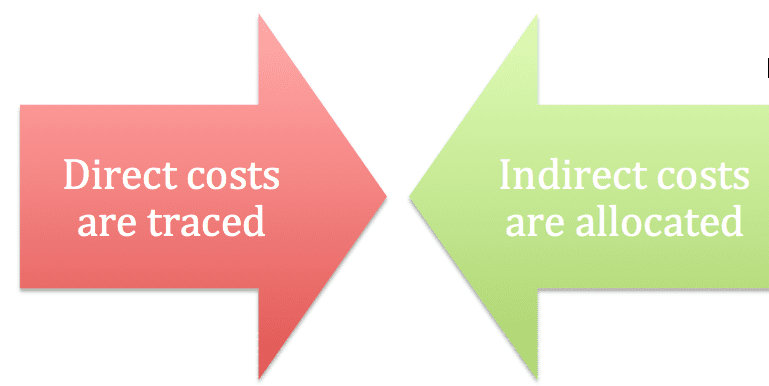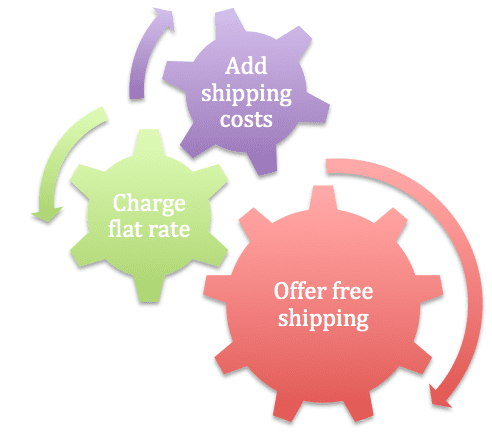What the Amazon/ Fed-X Dispute Teaches Us About Cost Allocation (Blog post, graphics)
Do you notice all of the delivery trucks on the road?
At one point the other day, I saw Amazon Prime, USPS, and Fed-X trucks: all in the same block. The volume of trucks increased during the pandemic.
Sure, online business is booming, but a big factor is shipping costs. How to you properly assign company costs to each source of revenue?
The process can be difficult, and if you don’t allocate costs in a way that makes sense, your financial results will be distorted. You won’t understand how profitable a particular business line is, and that’s a big problem.
To illustrate this challenge, consider the 2020 dust-up between Amazon and Fed-X.
Contents
What Happened
This Jan. 2020 Wall Street Journal article explains that Amazon “notified its third-party merchants that they could once again use FedEx’s Ground network to ship orders placed under Amazon’s Prime membership program, nearly a month after imposing a ban on the service because of performance issues.”
What specific performance issues?
“An Amazon spokesman said FedEx Ground has been reinstated for Prime shipments fulfilled by third-party sellers now that the services are consistently meeting the retailer’s on-time delivery requirements.”
The issue here is that many third-party merchants (independent businesses that sell goods on Amazon) had to find a different method to ship goods while Fed-X Ground was not an option. The majority of Amazon sales come from third-party merchants, so the issue is a big deal.
The other options were more expensive.
“With FedEx Ground off limits, the merchants had to use other options to ship Prime orders, including FedEx’s higher-priced air delivery service, or services from rival United Parcel Service Inc.” If your costs increase, how to you assign costs to products, and measure profitability?
For content on accounting, personal finances, and entrepreneurship, join Conference Room for free.
Direct vs. Indirect Costs
At the beginning of my Cost Accounting For Dummies book, I make the distinction between direct and indirect costs. Assume, for example, that you manufacture baseball gloves.
- Direct costs: Costs that can be directly traced to a product or service. The leather material and the labor costs to run machinery are direct costs.
- Indirect costs: These costs are allocated, and cannot be directly traced to the product. The utility costs incurred to operate the baseball glove factory are indirect costs. You’ve got to heat and cool the factory, regardless of how many gloves you produce each month.
Let’s go back to our third-party merchant.
Cost vs. Benefits
You can determine the exact cost to ship a particular item to a customer, so, in that sense; it’s a direct cost. The question is how much effort do you want to invest to assign the exact cost?
Does the benefit of knowing the exact shipping costs outweigh the time and effort to collect the information?
With technology, many companies can nail down the exact cost to ship pretty easily.
You’ve probably had this experience. You buy something online and start the checkout process. You enter your address, and the e-commerce software computes the exact cost to ship and adds it to your bill.
Simple.
Why is this important?
Because the seller can confirm that exact cost to ship, which means the owner can make more informed business decisions. The owner can handle shipping costs in several ways:
- Add the shipping cost to the invoice
- Charge a flat rate for shipping, and use the actual shipping cost to calculate the specific profit (or loss) on each order
- Offer free shipping, and use the actual shipping cost to calculate the specific profit (or loss) on each order
More information on costs helps you manage your business.
The Lesson
Every dollar your company spends must be traced or allocated to a product you sell. If apply this rule to your business, you’ll know your total costs, and you’ll be able to price your product more accurately.
Go to Accounting Accidentally for 500+ blog posts and 450+ You Tube videos on accounting and finance:
Good luck!
Ken Boyd
Author: Cost Accounting for Dummies, Accounting All-In-One for Dummies, The CPA Exam for Dummies and 1,001 Accounting Questions for Dummies
(email) ken@stltest.net
(website and blog) https://www.accountingaccidentally.com/



